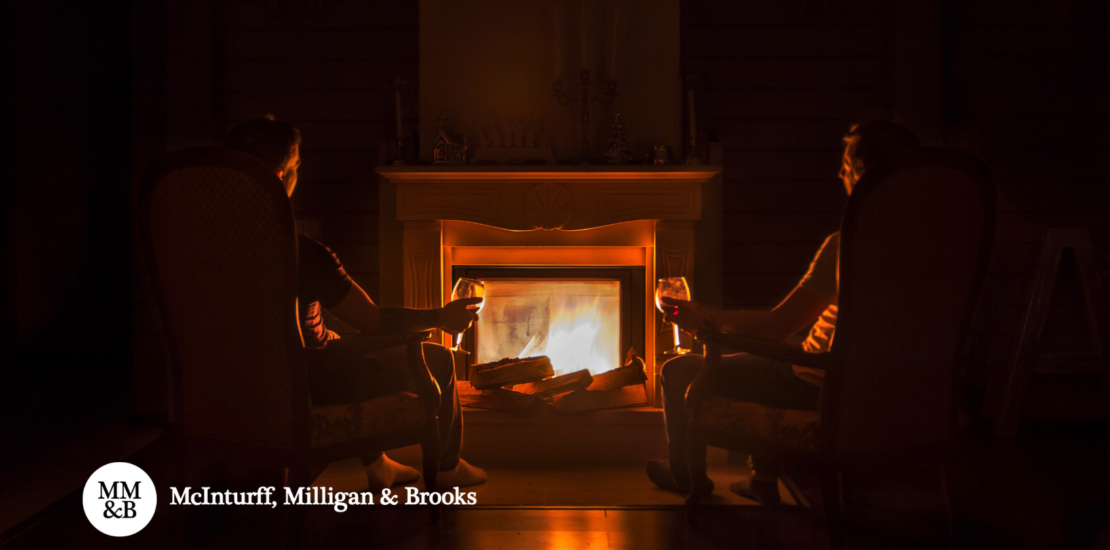- December 17, 2018
- Posted by: MMB
- Category: Personal Insurance

‘Tis the season for roasting chestnuts over an open fire to keep Jack Frost from nipping at your nose!
Fireplaces delight millions of homeowners all around the world, but whether the fireplace runs on gas, wood, or electricity, homeowners must take steps to minimize the chance of the fire spreading and taking over the home. In fact, fireplaces are responsible for approximately 22,500 house fires every single year (CSIA).
We’ve compiled this list of tips for gas, wood, and electric fireplaces to help you keep your home safe and warm this season.
Electric Fireplace
- Do not block the fresh air intake or the hot air discharge vents.
- Always unplug the unit when not in use.
- Never operate the fireplace if the cord is damaged.
- Electric fireplaces are for indoor use only. Outdoor exposure can damage the unit.
- Do not use any type of electric heaters near water (sinks, faucets, bathrooms, or laundry rooms).
- The cable or cord of the unit should never be run under combustibles such as furniture or carpets.
- Electric fireplaces have fixtures that spark. Keep flammable liquids, gasoline, or paints away from these units.
Wood Burning Fireplace
- Only burn dry, cured wood that has been split and dried for 8-12 months. Keep your stored wood covered, but allow a draft to circulate.
- Check your damper to make sure there is no debris preventing it from opening and closing.
- Ensure there is no creosote build-up along the stovepipe walls. Creosote is a sticky tar material that forms when wood burns. It can condense along the stovepipe walls and catch fire if not removed.
- Did you know coals and ashes can stay hot for 3 days? Removing ashes to keep a clean fireplace is essential for stove maintenance, but always make sure the ashes are extinguished before disposing of them.
Gas Fireplace
- All gas fireplaces should have a protective screen. This screen provides a barrier that prevents burns and stops nearby objects from coming in contact with the extreme heat of the fireplace. Remember that screens can also become hot, so avoid touching it when the fireplace is on.
- Opt for direct vent fireplaces. Direct vents have sealed combustion systems that protect indoor air quality by drawing air from outside the home to help fuel the fire, while keeping the exhaust and debris outside the home.
- Hire a licensed technician to inspect your gas fireplace annually. They will check the gas lines, clean the burner, and check for buildup, damage, and condensation.
As a general rule for all fireplaces, keep objects and furniture at least 3 feet (0.9 m) away from all sides of a fireplace.
If you have questions about fire safety, fire prevention, or insurance in general, contact McInturff, Milligan & Brooks via the form below or at (423) 639-5171.
Contact Us
We would love to hear from you! Please fill out this form and we will get in touch with you shortly.
